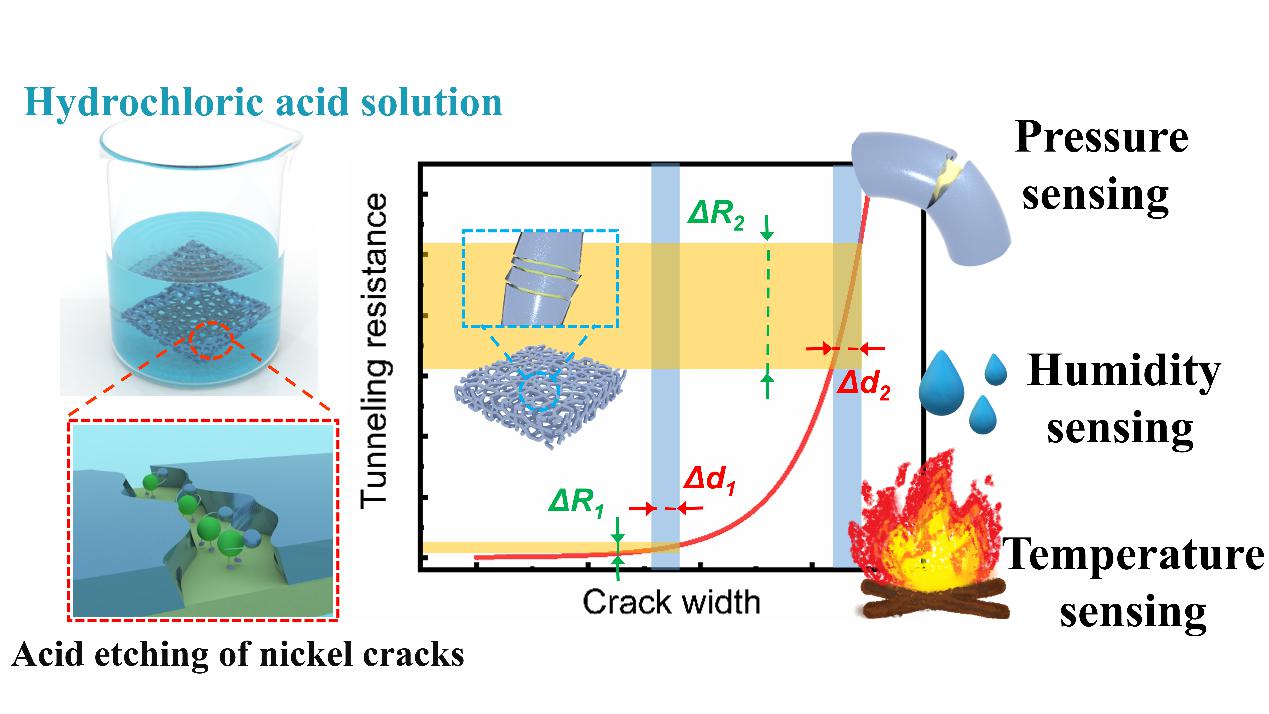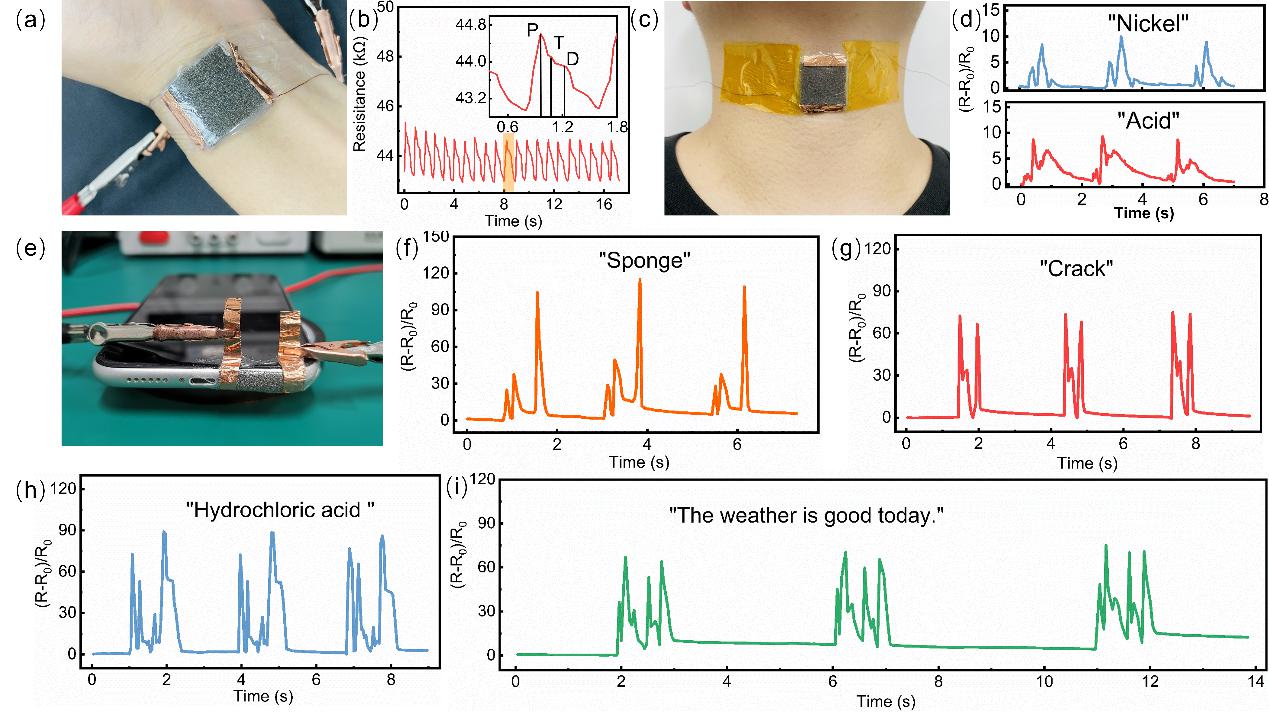February 22, 2022
| By Zhang Liu | Copyedited by William, Zhang Liu
Flexible wearable sensors offer great application potential in the fields of biomedical monitoring, human activity detection, and automatic control technology. The flexible devices research team led by Dr. Sheng Bin, Ultra-precision Manufacture Team of USST, made a series of achievements in study of flexible wearable sensors. Relative results were published a paper entitled Improved sensitive conductive sponge sensors with tunnel-crack broadening for pressure, humidity and temperature sensing application in an international authorative journal Sensors and Actuators B : Chemical. (IF:7.460).
The researcher proposed a simple method of expanding the width of nanocracks on three-dimensional (3D) conductive sponge sensor by acid etching, which can be used to enhance the sensitivity of pressure, humidity and temperature sensing. The acid-etched tunnel-cracked nickel networks on polyurethane sponge (ATNNPS) samples were prepared by ion sputtering nickel conductive networks on the polyurethane sponge, followed by mechanical compression and acid etching. ATNNPS served as a sensitive platform for pressure, humidity, and temperature sensing, and offered good mechanical elasticity and high compressibility. ATNNPS exhibited a piezoresistive sensitivity of 257.5 kPa-1, which was over 3000 times higher than that of an unetched sample. Similarly, acid etching increased the humidity and temperature sensitivities by over 46,000 times (69.96 kΩ/1%RH) and 41 times (TCR=1.770 ◦C-1).

The flexible sensor offered high sensitivity, fast response time, and good compliance, and was used in various human physiological signal detectors for pulse monitoring, body movement monitoring, and speech recognition. ATNNPS-4 was placed on the wrist of a human subject using medical tape for real-time monitoring of the pulse wave of the radial artery. The resistance change of ATNNPS-4 caused by pulsation of the radial artery allowed for accurate and stable detection of the main wave, tidal wave, and dicrotic wave of the pulse. ATNNPS-based sensors offer appropriate sensing properties, low cost, easy fabrication, and the application potential is shown by using it in a proof-of-principle setup for speech recognition, pulse wave monitoring and automatic switch.

Link to the paper: https://www.sciencedirect.com/science/article/abs/pii/S0925400522001393

 Home
·
News & Events
·
Content
Home
·
News & Events
·
Content

